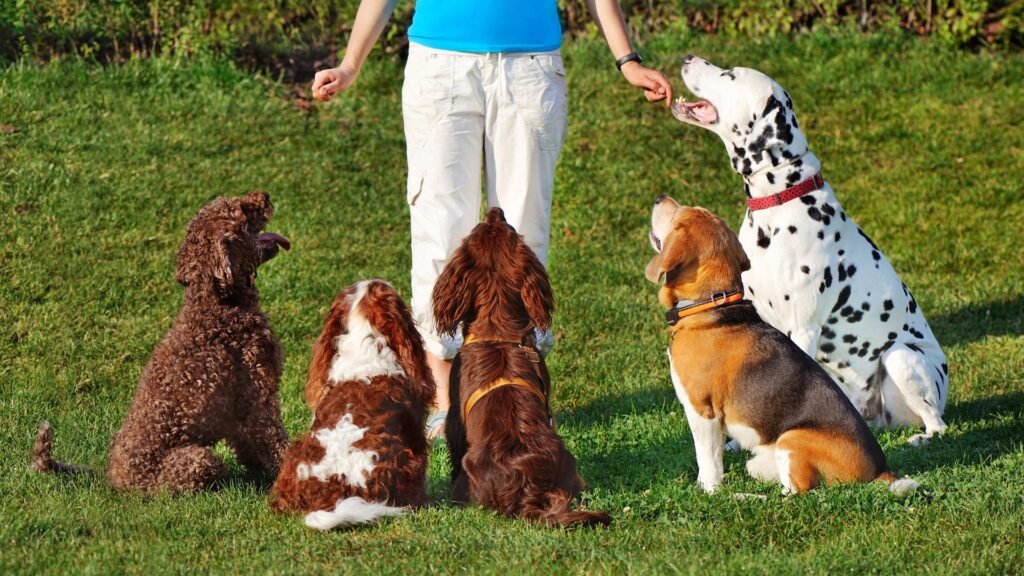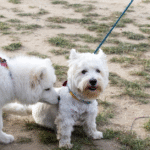What Is a Reactive Dog?
A reactive dog overreacts to certain triggers—whether it’s other dogs, strangers, loud noises, or unfamiliar environments. Unlike aggression, which is often calculated, reactivity is an emotional outburst driven by fear, frustration, or overexcitement.
Common signs of reactivity include:
-
Barking or lunging on leash
-
Growling at approaching people or dogs
-
Excessive whining or pacing
-
Inability to calm down after exposure to a trigger
If this sounds like your dog, don’t worry—reactivity is manageable with the right approach!
Why Is My Dog Reactive?
Reactivity can stem from multiple factors:
✔ Lack of Early Socialization – Puppies not exposed to various environments may become fearful adults.
✔ Negative Past Experiences – A bad encounter with another dog or person can create lasting fear.
✔ Genetic Predisposition – Some breeds are more prone to high arousal (e.g., herding dogs).
✔ Frustration on Leash – Dogs that want to greet but can’t may lunge or bark.
✔ Pain or Medical Issues – Always rule out health problems with a vet first.
How to Help a Reactive Dog: Step-by-Step Training
1. Identify Triggers & Threshold Distance
Every reactive dog has a “threshold”—the distance at which they notice a trigger but don’t react. Your goal is to stay under threshold while training.
How to find it:
-
Observe your dog’s body language (ears forward, stiff posture = approaching threshold).
-
Start training far enough away that your dog can still focus on you.
2. Use Counter-Conditioning & Desensitization
This science-backed method changes your dog’s emotional response to triggers.
How it works:
-
Spot a trigger at a safe distance.
-
Before your dog reacts, say “Yes!” and reward with high-value treats (chicken, cheese).
-
Repeat until your dog looks at you when they see a trigger (expecting a treat).
3. Teach an Alternative Behavior
Instead of reacting, give your dog a job to do:
-
“Watch Me” – Train eye contact on cue.
-
“Find It” – Toss treats on the ground to redirect focus.
-
“U-Turn” – Teach your dog to turn away from triggers.
4. Manage the Environment
Avoid forcing your dog into overwhelming situations. Instead:
✔ Use front-clip harnesses for better control.
✔ Walk during quieter times of day.
✔ Create space by crossing the street when needed.
5. Build Confidence Through Games
Reactive dogs often lack confidence. Try:
-
Treat searches (sniffing lowers stress).
-
Obstacle courses (builds problem-solving skills).
-
Trick training (boosts their self-assurance).
Mistakes That Make Reactivity Worse
❌ Punishing the reaction – Yelling or leash corrections increase stress.
❌ Avoiding all triggers – Prevents progress through controlled exposure.
❌ Keeping a tight leash – Tension communicates anxiety to your dog.
❌ Expecting too much too soon – Progress takes weeks or months.
When to Seek Professional Help
If your dog:
-
Has bitten or shown aggression
-
Doesn’t improve after consistent training
-
Causes you significant stress on walks
…it’s time to consult a certified behaviorist or try a structured program.
Transform Your Reactive Dog with Doggy Dan’s Canine Reactivity Webinar
If you’re struggling to make progress alone, Doggy Dan’s Canine Reactivity Webinar provides:
✅ Step-by-step video lessons – Fix leash reactivity, barking, and fear.
✅ Gentle, force-free methods – No shock collars or punishment.
✅ Lifetime access – Train at your own pace.
✅ Proven techniques – Used by thousands of reactive dog owners.
“My dog went from lunging at every passerby to calmly walking past triggers. This webinar changed our lives!” – Lisa, webinar graduate
👉 Click Here to Join the Webinar Now!
Final Thoughts: There’s Hope for Your Reactive Dog!
Reactivity doesn’t have to control your life. With patience, consistency, and the right training, you can help your dog feel safer and more confident in the world.
Remember:
-
Progress is gradual – Celebrate small wins.
-
Your energy matters – Stay calm, and your dog will too.
-
Help is available – Programs like Doggy Dan’s make training easier.
What’s your biggest challenge with your reactive dog? Share below, and let’s troubleshoot together! 🐾


